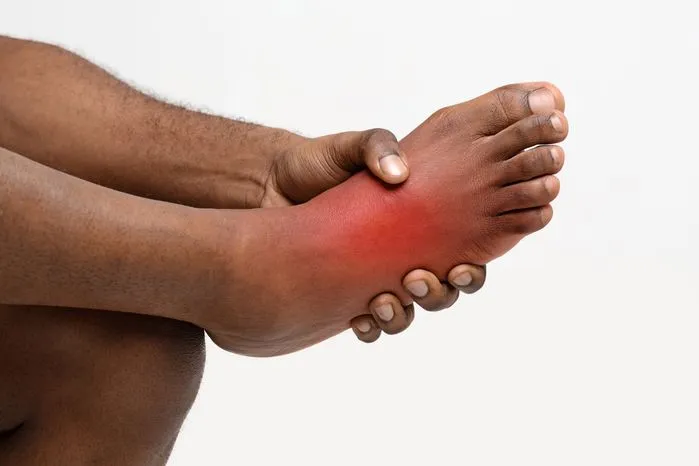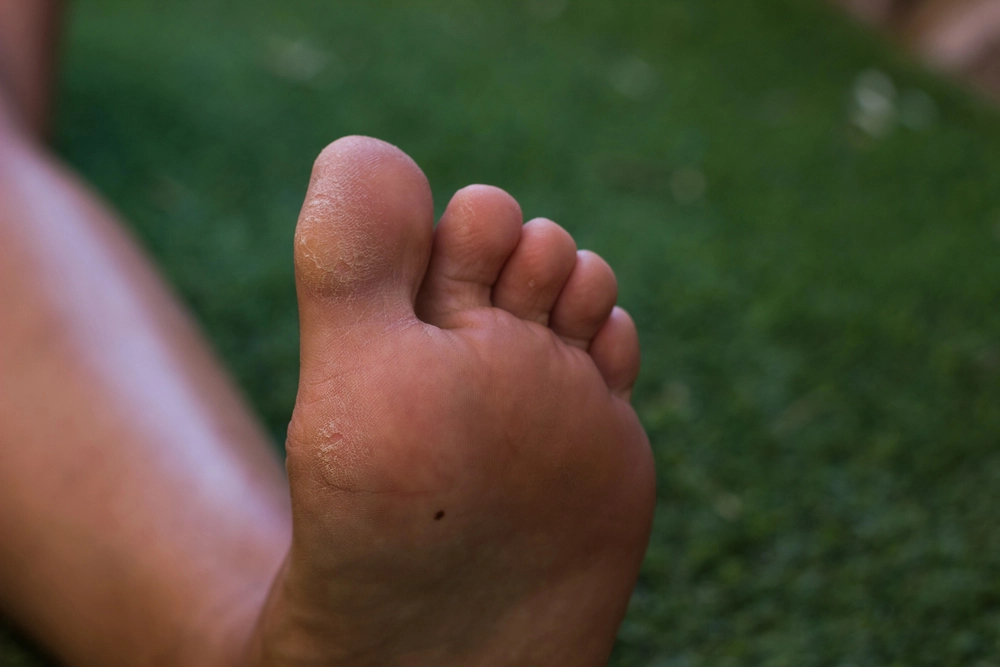
At the Releford Foot and Ankle Institute, we’ve helped thousands of patients navigate the early warning signs of this progressive condition. Based on decades of hands-on treatment experience and diagnostic precision, our specialists have identified the signs you can’t afford to ignore. This guide goes beyond generic checklists—we break down what these clues feel like, how they typically progress in patients, and what early intervention looks like when handled by experts who specialize in this field.
Top 5 Takeaways
- Don’t ignore these early warning signs.
- Knowing its signs helps patients control the disease.
- Delaying care can lead to serious.
- Knowing it in its earlier stages helps slow or stop progression.
- Your knowledge about it and your reaction is helpful.
Understanding Diabetic Neuropathy
Diabetic neuropathy, a disabling diabetes complication, needs thorough comprehension for effective early detection and management. Nerve damage marks this condition, originating from extended periods of high blood sugar, impacting numerous body parts.
Several risk factors contribute to this ailment, including excessive weight and tobacco use. Importantly, risk intensifies with poor blood sugar control.
Numbness or Reduced Sensation
Often starting at the fingertips or toes, it gradually progresses up the limb in a 'glove and stocking' pattern. Its impact on daily life can be significant, causing difficulty with routine tasks and potentially leading to severe complications.
Checking your feet regularly, controlling glucose levels, taking prescribed medications, and developing healthy habits help.
Sharp, Jabbing Pain
This discomfort can strike without warning, disturbing not only an individual's daily life but also affecting their emotional state. Managing this discomfort becomes an important part of the treatment plan.
Several strategies can be used to alleviate this discomfort, such as medication and physical therapy. For persistent discomfort, stronger prescription drugs may be required. Some antidepressants and anti-seizure medications have proven effective in managing neuropathic discomfort.
Increased Sensitivity to Touch
Even benign physical contact like brushing against a shirt sleeve can turn into an overwhelming sensory event. This sign can present in several unique ways:
- Hyperalgesia: This is when painful stimuli feel more intense.
- Allodynia: This is feeling pain from stimuli that usually don't cause discomfort.
- Paresthesia: These are strange sensations, often described as tingling, prickling, or feeling like 'pins and needles'.
- Dysesthesia: This is an unpleasant, strange sense of touch. It might feel like your skin is burning or crawling.
Muscle Weakness or Paralysis
Resulting from motor nerve damage, this condition affects muscle movement control.
Therapeutic options for this symptom prioritize the management of blood glucose levels, curtailing further nerve injury. Patients may find physical therapy helpful in fortifying weakened muscles and enhancing mobility. Extreme cases may require assistive apparatus like braces or even wheelchairs.
"After treating thousands of patients with diabetic neuropathy, one pattern is clear: symptoms rarely arrive all at once, and they’re often misunderstood in the early stages. What might feel like a little numbness today can evolve into sharp, shooting pain or even loss of mobility tomorrow. At the Releford Foot and Ankle Institute, we don't just treat symptoms—we help patients recognize the subtle, progressive signs that others might overlook. That early understanding can mean the difference between manageable discomfort and permanent nerve damage."
Supporting Facts and Statistics
What the Data Says — and What We See Every Day
At the Releford Foot and Ankle Institute, we’ve helped thousands recognize the warning signs of diabetic neuropathy. These stats confirm what we experience firsthand in our clinic:
1. Most Diabetic Patients Will Develop Neuropathy
- 60%–70% of people with diabetes develop some form of neuropathy
→ govinfo.gov - We often see patients dismiss early numbness until the damage is advanced.
- Clinical Insight: Early symptoms are subtle, but ignoring them leads to severe complications.
2. Risk Increases with Poor Blood Sugar Control
- CDC lists high blood sugar, obesity, and high blood pressure as key risk factors
→ cdc.gov - We see faster progression in patients with uncontrolled diabetes.
- Pro Tip: Tight glucose control significantly reduces risk.
3. Intensive Blood Sugar Management = 60% Lower Risk
- The DCCT study showed a 60% reduction in neuropathy risk with intensive glucose control
→ repository.niddk.nih.gov - Patients who manage A1C proactively experience far fewer complications.
- Our Observation: Consistent A1C control halts progression in many cases.
What This Means for You
- Don’t wait for symptoms to become severe.
- Monitor blood sugar. Check your feet. Stay ahead of complications.
- We’re here to help you catch neuropathy early—and stop it from progressing.
Final Thoughts & Expert Opinion
This is a true condition. It worsens when you disregard it. It requires immediate medical intervention to slow its progression.
What We’ve Learned from Treating Thousands:
- Most cases are diagnosed too late.
- Early signs are often dismissed as something less serious.
- Prompt action is critical.
- Acting early can prevent complications.
- Education is part of the cure.
- Patients who understand the signs take faster, more effective action.
Our Clinical Opinion:
- Don’t normalize its clues.
- Take action immediately. Delaying care can lead to permanent damage or limb loss.
- Partner with your care team. A proactive approach with routine foot exams and symptom tracking leads to better outcomes.
Frequently Asked Questions
1. What is diabetic neuropathy?
Diabetic neuropathy is nerve damage caused by chronically high blood sugar levels, most commonly affecting the feet, legs, hands, and arms. It can lead to pain, numbness, and severe complications if untreated.
2. What are the 5 main symptoms of diabetic neuropathy?
According to The Releford Institute, the five hallmark symptoms are:
- Numbness or reduced ability to feel pain or temperature
- Tingling or burning sensations (paresthesia)
- Sharp, shooting, or stabbing pain in the feet or legs
- Muscle weakness or unsteadiness when walking
- Increased sensitivity to touch, even from light pressure
3. How early can symptoms of diabetic neuropathy appear?
Symptoms can appear within the first 10 years of diabetes, sometimes earlier if blood sugar levels are poorly managed. Early signs are often subtle, like numbness in the toes or a tingling sensation at night.
4. What part of the body is affected first in diabetic neuropathy?
The feet and toes are typically the first areas affected due to their distance from the central nervous system. This is known as distal symmetric polyneuropathy, the most common form.
5. What does diabetic nerve pain feel like?
Patients describe it as:
- Burning or electric shock sensations
- Shooting pain or pins-and-needles
- Pain that worsens at night or with a light touch
These sensations can be constant or intermittent.
6. How is diabetic neuropathy diagnosed?
The Releford Institute uses:
- Neurological exams (reflex, vibration, and touch tests)
- Nerve conduction studies or EMG
- Monofilament and tuning fork testing for foot sensitivity
7. Can diabetic neuropathy affect balance and walking?
Yes. Loss of sensation, especially in the feet, can cause impaired balance, unsteady gait, and increased fall risk. In advanced cases, it may lead to foot drop or muscle atrophy.
8. What other complications can diabetic neuropathy cause in the feet?
If left untreated, it may lead to:
- Foot ulcers
- Infections that go unnoticed due to numbness
- Charcot foot (bone and joint damage)
- Amputation in severe cases
9. Is diabetic neuropathy reversible?
While nerve damage itself is usually not reversible, early intervention can slow progression and reduce pain. Tight blood sugar control is the most effective way to prevent worsening symptoms.
10. How is diabetic neuropathy treated?
Treatment may include:
- Blood sugar management
- Medications for nerve pain (e.g., pregabalin, duloxetine)
- Topical creams
- Physical therapy and foot protection strategies
The Releford team also offers custom orthotics and advanced nerve stimulation therapy.
11. What lifestyle changes help with symptom management?
- Maintain target blood glucose levels
- Wear protective footwear
- Inspect feet daily for cuts or changes
- Avoid smoking and excessive alcohol
- Exercise regularly to improve circulation
12. When should I see a podiatrist for diabetic neuropathy?
See a podiatrist if you experience:
- Persistent tingling or numbness
- Sudden foot pain or wounds that don’t heal
- Balance issues or deformities
Early evaluation is key to preventing ulcers, infections, and long-term disability.

















